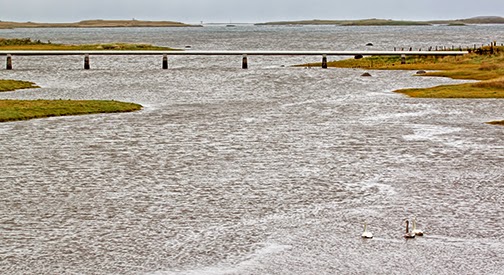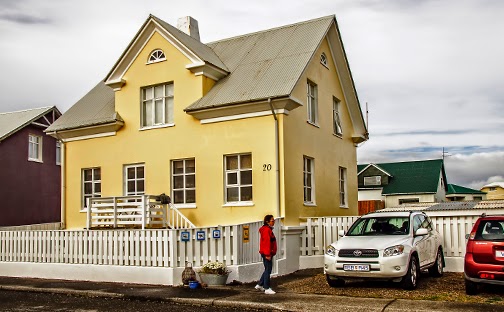We are taking a detour from the ring road, heading to another on Iceland's peninsulas. Snaefellsness
The Google Translate helps us to understand the name:
snæ = snow,
fells = mountain
jökull = glacier
And below is the mountain (or rather a part of it) that gave the entire peninsula its name.
It is a volcano - some 1450m in height - crowned by a glacier.
 It is also a site of the famous "Journey To The Centre Of The Earth" written by the French Sci-Fi writer Jules Verne in 1864.
It is also a site of the famous "Journey To The Centre Of The Earth" written by the French Sci-Fi writer Jules Verne in 1864. What is interesting is that Verne's characters enter the Earth here at Snaefells but exit at Stromboli - another volcano located of the coast of Sicily (Italy).
One hot journey indeed.
 |
| Photo Stan Sykora |
Conveniently located Cafe Arnarstapi is more than a welcome sight on a day like this. It was built in 1985 in an old style with turf roofs and stone edgings.
A Tatra truck built by the Czech company Tatra - the 3rd oldest car maker in the world and a pride of the Czech nationals the world over! It is so nice for us - the long time expats - to see it here, working for a travel company of the 2014 rather than being used for a military mission of the old Soviet Union of the past century. We are not sure if the bunch of young people travelling with it would understand our feelings. After all the Berlin Wall collapsed 25 years ago.

The entire world is piling into the shelter as the heavy clouds obscure our surroundings.

What can be better than a cup of hearty soup (lamb stock and veggies - and oh, so good) and a cup of strong coffee?


A bit of colour on a dreary day makes everything look better.
A miniature statue at the Cafe waves us good-bye as we leave for the nearby cliffs.
In between stands a rather large structure dedicated to the local deity Bardur, the giant. It is also a memorial to a 10-year old, who perished on the mountain in 1928.

Atlantic ocean, not too far away, is being whipped into a foam and its angry roar can be heard in the distance.
Here is the place where a large volcano emerged from the ocean, leaving the coastline scarred with many kilometers of basalt columns and other formations.
It is a wild, eerily beautiful place.





























































